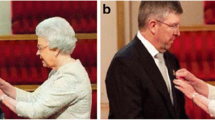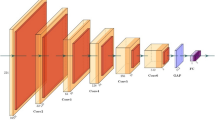Abstract
Traditional multimedia forensics techniques inspect images to identify, localize forged regions and estimate forgery methods that have been applied. Provenance filtering is the research area that has been evolved recently to retrieve all the images that are involved in constructing a morphed image in order to analyze an image, completely forensically. This task can be performed in two stages: one is to detect and localize forgery in the query image, and the second integral part is to search potentially similar images from a large pool of images. We propose a multimodal system which covers both steps, forgery detection through deep neural networks(CNN) followed by part based image retrieval. Classification and localization of manipulated region are performed using a deep neural network. InceptionV3 is employed to extract key features of the entire image as well as for the manipulated region. Potential donors and nearly duplicates are retrieved by using the Nearest Neighbour Algorithm. We take the CASIA-v2, CoMoFoD and NIST 2018 datasets to evaluate the proposed system. Experimental results show that deep features outperform low-level features previously used to perform provenance filtering with achieved Recall@50 of 92.8%.











Similar content being viewed by others
References
Murabayashi A (2018) The problem of fake photos in fake news. https://petapixel.com/2017/01/19/problem-fake-photos-fake-news/, Accessed: 2019-01-11
Fridrich AJ, Soukal BD, Lukáš AJ (2003) Detection of copy-move forgery in digital images. In: Proceedings of Digital Forensic Research Workshop, Citeseer
Lloret J, Bosch I, Sendra S, Serrano A (2011) A wireless sensor network for vineyard monitoring that uses image processing. Sensors 11(6):6165–6196
Birajdar GK, Mankar VH (2013) Digital image forgery detection using passive techniques: A survey. Elsevier Digital investigation 10(3):226–245
Farid H (2009) Image forgery detection. IEEE Signal Process. Mag. 26(2):16–25
Ahmed N, Natarajan T, Rao KR (1974) Discrete cosine transform. IEEE transactions on Computers 100(1):90–93
Lowe DG (2004) Distinctive image features from scale-invariant keypoints. International journal of computer vision 60(2):91–110
Bay H, Tuytelaars T, VanGool L (2006) Surf: Speeded up robust features. In: European conference on computer vision, Springer, pp 404–417
Amerini I, Ballan L, Caldelli R, DelBimbo A, Serra G (2011) A sift-based forensic method for copy–move attack detection and transformation recovery. IEEE Trans. Informat. Forensics and Security 6(3):1099–1110
Shivakumar BL, Baboo SS (2011) Detection of region duplication forgery in digital images using surf. International Journal of Computer Science Issues (IJCSI) 8(4):199
Bhatti MH, Khan J, Khan M UG, Iqbal R, Aloqaily M, Jararweh Y, Gupta B (2019) Soft computing-based eeg classification by optimal feature selection and neural networks. IEEE Transactions on Industrial Informatics 15 (10):5747–5754
Khan MZ, Harous S, Hassan SU, Khan M UG, Iqbal R, Mumtaz S (2019) Deep unified model for face recognition based on convolution neural network and edge computing. IEEE Access 7:72622–72633
Russakovsky O, Deng J, Su H, Krause J, Satheesh S, Ma S, Huang Z, Karpathy A, Khosla A, Bernstein M, Berg AC, Fei-Fei L (2015) ImageNet Large Scale Visual Recognition Challenge. International Journal of Computer Vision (IJCV) 115(3):211–252. https://doi.org/10.1007/s11263-015-0816-y
Simonyan K, Zisserman A (2014Sept.) Very deep convolutional networks for large-scale image recognition. arXiv preprint arXiv:1409.1556
Rao Y, Ni J (2016) A deep learning approach to detection of splicing and copy-move forgeries in images. In: 2016 IEEE International Workshop on Information Forensics and Security (WIFS), IEEE, pp 1–6
Bayar B, Stamm MC (2016) A deep learning approach to universal image manipulation detection using a new convolutional layer. In: Proceedings of the 4th ACM Workshop on Information Hiding and Multimedia Security, ACM, pp 5–10
Chen J, Kang X, Liu Y, Wang ZJ (2015) Median filtering forensics based on convolutional neural networks. IEEE Signal Processing Letters 22(11):1849–1853
Wu Y, Abd-Almageed W, Natarajan P (2018September) Busternet: Detecting copy-move image forgery with source/target localization. In: Proceedings of the European Conference on Computer Vision (ECCV), pp 168–184
Pinto A, Moreira D, Bharati A, Brogan J, Bowyer K, Flynn P, Scheirer W, Rocha A (2017) Provenance filtering for multimedia phylogeny. In: 2017 IEEE International Conference on Image Processing (ICIP), IEEE, pp 1502–1506
Asghar K, Habib Z, Hussain M (2017) Copy-move and splicing image forgery detection and localization techniques: a review. Taylor & Francis Australian Journal of Forensic Sciences 49(3):281–307
Steinbach M, Karypis G, Kumar V, et al. (2000) A comparison of document clustering techniques. In: KDD workshop on text mining, vol 400, Boston, pp 525–526
Bo X, Junwen W, Guangjie L, Yuewei D (2010) Image copy-move forgery detection based on surf. In: Proc. IEEE Int. Conf. on Multimedia Information Netw. and Security, pp 889–892
Qu Z, Qiu G, Huang J (2009) Detect digital image splicing with visual cues. In: Springer Int. workshop on Information hiding, pp 247–261
Lin SD, Wu T (2011) An integrated technique for splicing and copy-move forgery image detection. In: Proc. IEEE 4th International Congress on Image and Signal Processing, vol 2, pp 1086–1090
Lin Z, He J, Tang X, Tang C-K (2009) Fast, automatic and fine-grained tampered jpeg image detection via dct coefficient analysis. Pattern Recogn 42(11):2492–2501
Cao Y, Gao T, Fan L, Yang Q (2012) A robust detection algorithm for copy-move forgery in digital images. Forensic science international 214 (1-3):33–43
Mahmood T, Mehmood Z, Shah M, Saba T (2018) A robust technique for copy-move forgery detection and localization in digital images via stationary wavelet and discrete cosine transform. J Vis Commun Image Represent 53:202–214
Muhammad G, Al-Hammadi MH, Hussain M, Bebis G (2014) Image forgery detection using steerable pyramid transform and local binary pattern. Mach Vis Appl 25(4):985–995
Yosinski J, Clune J, Bengio Y, Lipson H (2014) How transferable are features in deep neural networks?. In: Prof. Advances in neural information processing systems, pp 3320–3328
Wang P, Wei Z, Xiao L (2016) Pure spatial rich model features for digital image steganalysis. Multimedia Tools and Applications 75(5):2897–2912
Kang X, Stamm MC, Peng A, Liu KJRay (2013) Robust median filtering forensics using an autoregressive model. IEEE Transactions on Information Forensics and Security 8(9):1456–1468
Yuan H-D (2011) Blind forensics of median filtering in digital images. IEEE Transactions on Information Forensics and Security 6(4):1335–1345
Cao G, Zhao Y, Ni R, Yu L, Tian H (2010) Forensic detection of median filtering in digital images. In: 2010 IEEE International Conference on Multimedia and Expo, IEEE, pp 89–94
Bunk J, Bappy JH, Mohammed TM, Nataraj L, Flenner A, Manjunath BS, Chandrasekaran S, Roy-Chowdhury AK, Peterson L (2017) Detection and localization of image forgeries using resampling features and deep learning. In: 2017 IEEE Conference on Computer Vision and Pattern Recognition Workshops (CVPRW), IEEE, pp 1881–1889
Helgason S, Helgason S (1999) The radon transform. Springer, vol 2
Chum O, Philbin J, Zisserman A, et al. (2008September) Near duplicate image detection: min-hash and tf-idf weighting.. In: BMVC, vol 810, pp 812–815
Li M, Wang B, Ma W-Y, Li Z (2010) Detecting duplicate images using hash code grouping, Google Patents. US Patent 7,647,331
Dong W, Wang Z, Charikar M, Li K (2012) High-confidence near-duplicate image detection. In: Proceedings of the 2nd acm international conference on multimedia retrieval, ACM, p 1
Agarwal R, Verma OP (2019) An efficient copy move forgery detection using deep learning feature extraction and matching algorithm. Multimedia Tools and Applications 79:7355–7376
Jaiswal AK, Srivastava R (2019) Image splicing detection using deep residual network. Available at SSRN 3351072
Ahmed B, Gulliver TA, et al. (2020) Image splicing detection using mask-rcnn. SIViP, pp 1–8
Dias Z, Goldenstein S, Rocha A (2013) Toward image phylogeny forests: Automatically recovering semantically similar image relationships. Forensic science international 231(1-3):178–189
(2016) Nist media forensics challenge. https://www.nist.gov/itl/iad/mig/media-forensics-challenge, Accessed: 2018-07-26
Medibrowser. http://medifor.rankone.io/
Moreira D, Bharati A, Brogan J, Pinto A, Parowski M, Bowyer KW, Flynn PJ, Rocha A, Scheirer WJ (2018) Image provenance analysis at scale. IEEE Trans Image Process 27(12):6109–6123
Szegedy C, Vanhoucke V, Ioffe S, Shlens J, Wojna Z (2016) Rethinking the inception architecture for computer vision. In: Proceedings of the IEEE conference on computer vision and pattern recognition, pp 2818–2826
Wojna Z, Ferrari V, Guadarrama S, Silberman N, Chen L-C, Fathi A, Uijlings J (2017July) The devil is in the decoder. arXiv preprint arXiv:1707.05847
Dong J, Wang W, Tan T (2013) Casia image tampering detection evaluation database. In: 2013 IEEE China Summit and International Conference on Signal and Information Processing, IEEE, pp 422–426
Tralic D, Zupancic I, Grgic S, Grgic M (2013) Comofodnew database for copy-move forgery detection. In: Proceedings ELMAR-2013, IEEE, pp 49–54
(2018) Nist media forensics challenge. https://www.nist.gov/itl/iad/mig/media-forensics-challenge-2018, Accessed: 2019-06-11
Christlein V, Riess C, Jordan J, Riess C, Angelopoulou E (2012) An evaluation of popular copy-move forgery detection approaches. IEEE Transactions on information forensics and security 7(6):1841–1854
Cozzolino D, Poggi G, Verdoliva L (2015) Efficient dense-field copy–move forgery detection. IEEE Transactions on Information Forensics and Security 10 (11):2284–2297
Wu Y, Abd-Almageed W, Natarajan P (2017) Deep matching and validation network: An end-to-end solution to constrained image splicing localization and detection. In: Proceedings of the 25th ACM international conference on Multimedia, ACM, pp 1480–1502
Garcia M, Canovas A, Edo M, Lloret J (2008) A QoE management system for ubiquitous IPTV devices. In: The Third International Conference on Mobile Ubiquitous Computing, Systems, Services and Technologies (UBICOMM)
Author information
Authors and Affiliations
Corresponding author
Additional information
Publisher’s note
Springer Nature remains neutral with regard to jurisdictional claims in published maps and institutional affiliations.
Rights and permissions
About this article
Cite this article
Jabeen, S., Khan, U.G., Iqbal, R. et al. A deep multimodal system for provenance filtering with universal forgery detection and localization. Multimed Tools Appl 80, 17025–17044 (2021). https://doi.org/10.1007/s11042-020-09623-w
Received:
Revised:
Accepted:
Published:
Issue Date:
DOI: https://doi.org/10.1007/s11042-020-09623-w




